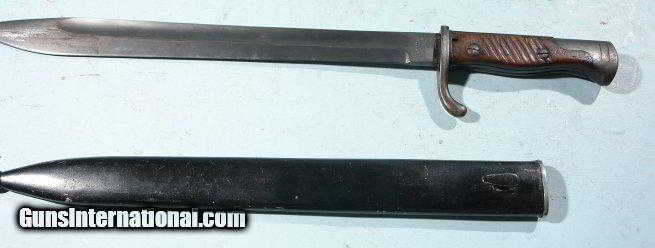

Until early the stocks had a flat buttplate. The butts of the semi-pistol grip Karabiner 98k stocks were not uniform. The laminated stocks were, due to their dense composite structure, somewhat heavier compared to one-piece stocks. From onwards the rifles had laminated stocksthe result of trials that had stretched through the s. Patrone cartridges loaded with The sight line of early productions rifles have the ranging scale copied at the bottom of the tangent aiming element for setting the range whilst lying down.Įarly Karabiner 98k rifles had solid walnut wood or from some had solid oak wood one-piece stocks. These standard sight lines consisted of somewhat coarse aiming elements, making it suitable for rough field handling, aiming at distant area fire targets and low-light usage, but less suitable for precise aiming at distant or small point targets. Originally, the Karabiner 98k iron sight line had an open-pointed-post-type barlycorn front sight, and a tangent-type rear sight with a V-shaped rear notch. The Karabiner 98k rear tangent sight was flatter compared to and does not obstruct the view to the sides during aiming as the Langevisier long sight. The impractical "Langevisier" or "rollercoaster" rear sight of the Mauser Gewehr was replaced with a conventional tangent leaf sight. Such a thin black oxide layer provides only minimal protection against rust or corrosion, unless also treated with a water-displacing oil to reduce wetting and galvanic corrosion. The metal parts of the rifle were blueda process in which steel is partially protected against rust by a layer of magnetite Fe 3 O 4.

The joined rods from 3 rifles provided one full-length cleaning rod. Ffxi fps dropĮach rifle was furnished with a short length of cleaning rod, fitted through the bayonet stud. This change made it easier to rapidly operate the bolt, reduced the amount the handle projected beyond the receiver, and enabled mounting of aiming optics directly above the receiver. The straight bolt handle found on the Gewehr 98 bolt was replaced by a turned-down bolt handle on the Karabiner 98k. Its internal magazine can be loaded with five 7. The Karabiner 98k is a controlled-feed bolt-action rifle based on the Mauser M98 system. Patrone became the standard German service ball cartridge in the s.

Because of this the S Patrone was phased out in and the s. Patroneoriginally designed for long range machine gun use, produced less muzzle flash out of rifles that had a shorter barrel and also provided better accuracy. The Karabiner 98k was derived from earlier rifles, namely the Mauser Standardmodell of and the Karabiner 98b, which in turn had both been developed from the Gewehr Since the Karabiner 98k rifle was shorter than the earlier Karabiner 98b the 98b was a carbine in name only, a version of Gewehr 98 long rifle with upgraded sightsit was given the designation Karabiner 98 kurzmeaning "Carbine 98 Short". In February the Heereswaffenamt Army Weapons Agency ordered the adoption of a new military rifle. The Karabiner 98k therefore continues to appear in conflicts across the world as they are taken out of storage during times of strife. UK postage is £18, international at cost and it can be viewed in our shop.Although supplemented by semi- and fully automatic rifles during World War II, it remained the primary German service rifle until the end of the war in Millions were captured by the Soviets at the conclusion of World War II and were widely distributed as military aid. The scabbard has surface rust and it will benefit a polish and repaint. The blade is in good condition with rust free. The bayonet in its scabbard length is 20½ inches (52 cm). The blade length is 14.2 inches (36 cm) and the overall length of the bayonet is 19¼ inches (49 cm). This is a rare, highly collectable piece. The scabbard is made of black painted steel and is stamped with one imperial proof-mark. The bayonet is complete with its original steel scabbard.

It does show marks of field usage and sharpening. This particular example lacks any marks or stamps on the blade, making it quite unusual. In the beginning of the Great War it came with high ears and without flash-guard. It had a much stronger design but was still very long. The Bayonet M1898/05 was the successor of the M1898 long bayonet. ~ WW1 German M1898 Old Pattern Mauser Gewehr 98 Butchers Bayonet ~


 0 kommentar(er)
0 kommentar(er)
